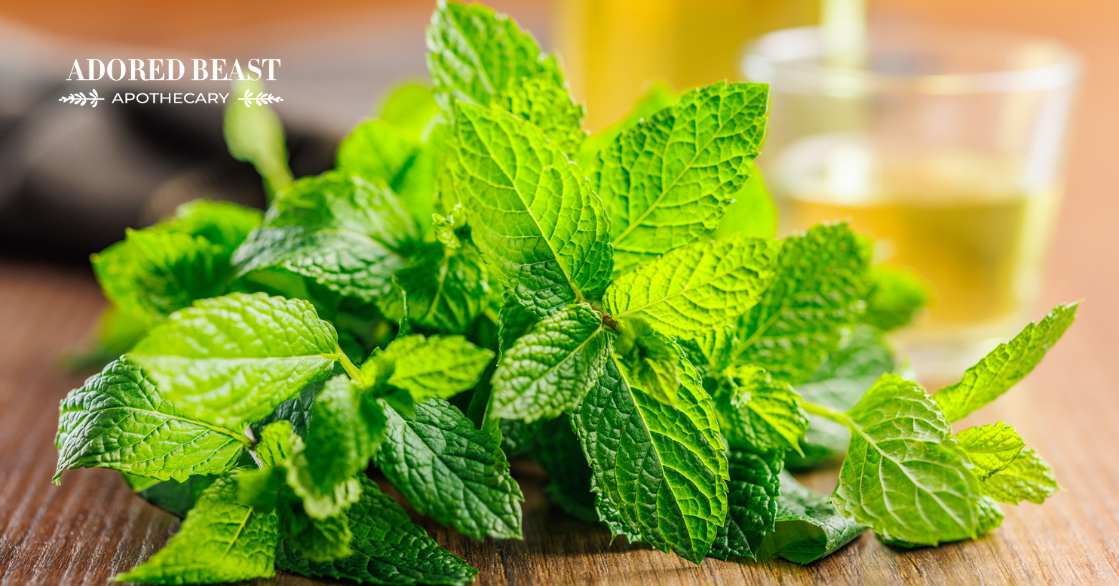It’s likely that you know someone or maybe you even have a horse with Equine Metabolic Syndrome (EMS). Insulin resistance (IR), also known as EMS, is an ever-growing issue among modern horses. It is defined as the failure of tissues to adequately respond to circulating insulin and control blood sugar. Obesity is one of the leading preceding factors in the development of this disease. Estimates suggest that between 20-40% of horses are obese. (1) Diet and lifestyle can greatly help or hinder the progression of EMS.
In this two-part article, we will compile the research to better understand why so many equines are having trouble with this frustrating metabolic issue and what we can do from a holistic viewpoint to prevent and manage it.
When Things Are Working Properly
Due to its prevalence, EMS has been well studied in horses. It has also gained recognition for being a preceding factor in the development of laminitis, a devastating inflammatory disease causing lameness and even death. So where do things go wrong? In order to understand EMS, we also need to understand how insulin metabolism works in a healthy horse.
Insulin is a hormone that acts as a key, unlocking several complex metabolic processes in the body. Here’s my nerdy step by-step breakdown of how it works:
- Mammals have an organ called the pancreas which houses special (islet) cells that produce the hormone insulin. Mammalian cells have special receptors that are genetically programmed to bind to insulin when they are functioning correctly.
- Islet cells excrete insulin when glucose (sugar) increases in the bloodstream. When insulin binds to the cell receptor, it physically changes the cellular membrane, allowing for a countless number of other metabolic actions to occur. It has a cascading effect on cellular and metabolic function.
- Some of the cell functions that insulin is involved in include carbohydrate and fat metabolism along with protein synthesis. It regulates cellular energy supply, macronutrient balance, and countless other metabolic processes. It’s a finely tuned system that keeps endocrine function humming within extremely specific parameters.
- Glucose gets taken up by cells partially based on how much insulin is circulating in the body, which tissues are in need of glucose (energy) at the time, and also by how sensitive the cells are to the presence of insulin. These processes all run seamlessly in the healthy horse….
When Things Go Wrong
With equine insulin resistance, the cells lose their ability to allow insulin to bind to the receptor. Without this ability, the cell becomes unable to perform the normal metabolic functions that follow. Researchers have studied the exact mechanics of IR development. Here are some of the things that we know so far:
- The most common causes of IR are obesity, high-starch diets, lack of exercise, and chronic stress. A combination of these things is the perfect storm. (1)
- IR horses produce excessive amounts of insulin in response to receptor insensitivity. In humans, the pancreas can actually burn out and stop producing insulin. This rarely occurs in horses, therefore, high insulin secretion can go on for many years before it is detected unless proactive blood testing is done. This is also why you don’t see horses getting insulin injections. In horses, the disease is not a failure of insulin secretion (in other words, it’s not diabetes) but rather a metabolic complication of the cell receptor. They have lots of insulin in the blood stream with nowhere to go.
- The cells and tissues that are affected can vary and it can be specific to one type of tissue depending on the root cause of the disease. The clinical symptoms can even vary based on which tissues are most adversely affected. In horses, IR has been linked first and foremost to obesity but newer research also shows that inflammation of the body tissues may also play a role. (2)
- Laminitis is a progression of insulin resistance. In horses, researchers suspect that laminitis may happen when the cell becomes confused and a different hormone receptor begins taking up the excess insulin. This receptor is called the insulin-like-growth factor (IGF) receptor which stimulates the IGF hormone. In a healthy metabolic state, the IGF hormone regulates different metabolic processes including hair and hoof growth. Researchers think that when laminitis occurs, it could be a result of accidental IGF hormone secretion, simulating the abnormal growth of the lamellar cells. (3) That’s why you see the hooves and hair coat growing out of control in horses with IR and laminitis.
- Cushing’s Disease (or Pituitary Pars Intermedia Dysfunction/PPID) is an auto-immune disease of the pituitary gland that some mistake for insulin resistance. PPID causes increased secretion of the adrenocorticotropic hormone (ACTH), a hormone that stimulates the production of cortisol. Increased cortisol levels result in insulin resistance and laminitis is a complication of both Cushing’s and EMS. It’s important to differentiate the EMS horse and the Cushing’s horse. While they are similar in some ways, they differ in courses of treatment. Not all EMS horses have PPID.
- Protein ingestion stimulates insulin secretion – so in IR horses, extra dietary protein may not be such a good thing… it could contribute to laminitis if it increases blood insulin levels in a horse that is already secreting too much. It will depend on the case. Consult a professional to help choose the best diet plan for your horse.
- Minis, ponies, donkeys, Arabians, and Morgans are at particularly high risk for developing EMS. This is most likely due to the fact that they are small equines and can easily be overfed.
EMS Risk Assessment: Is Your Horse SAD?
SAD stands for STRESS, ACTIVITY, and DIET. These are the main factors in preventing and managing EMS. Here’s my SAD assessment system for understanding your horse’s “ground zero” and where they might need help. This is a great way to prevent the development of EMS or formulate a holistic approach with your veterinarian if you receive this diagnosis.
Stress
Has your horse experienced prolonged physical stress eg. illness or inflammatory issues?
Inflammation appears to play a part in IR development. You’ll need to assess your horse’s overall inflammatory load eg. sporting, barn and disease management.
SAD stands for STRESS, ACTIVITY, and DIET. These are the main factors in preventing and managing EMS.
Does your horse have a history of chronic GI issues (eg. ulcers and/or colic)?
Gut imbalance also puts your horse at risk for insulin resistance – microbiota produce enzymes that increase insulin sensitivity. (4) Be proactive and ensure you are not using farm management methods that might be contributing to gut disease in your horses. (Eg. confined quarters, lack of movement, sporadic feeding schedule, processed/high starch feeds, poor hay quality, etc.) – check out my article on Equine Gut Health for more information on how to assess your farm management plan in relation to gut health. We’ll discuss gut-friendly foods and lifestyle for horses in Part 2.
Is your horse on drugs that might be affecting his insulin sensitivity?
Antihypertensive agents such as diuretics and β-blockers and corticosteroids have been reported to impair glucose tolerance. (5) If your horse is on these medications, you can take a proactive approach to support them. Do this with the help of an equine nutritionist and your veterinarian since some herbs are contraindicated with certain drugs.
Does your horse seem emotionally stressed?
Mental/emotional stress may play a significant role in the development of IR, causing glucocorticoid hormone secretion. Cortisol (a stress hormone) has been linked to insulin resistance. (6) Horses can display obvious signs of emotional stress but some are stoic about it so make sure you are really honest with yourself about how comfortable they are in their own skin and in their environment.
Increased cortisol levels due to chronic stress can also contribute to obesity, increasing the risk of IR. (7)
Is your horse sleeping properly?
Lack of sleep can also change the hormonal regulation of and sensitivity to insulin. (8) This can be related to stress, exercise program, pain, and even the type and amount of bedding you use. It’s a vicious cycle because lack of sleep can cause inflammation and neurological stress, increasing cortisol.
Activity
Does your horse get enough exercise?
Exercise enhances insulin sensitivity. (9) Be sure your horse is getting enough!
Obesity leads to insulin resistance. (10) Your horse needs an appropriate exercise program to maintain a healthy weight. Obesity also contributes to inflammatory diseases of joint and cardiovascular tissues which may cause stress and affect insulin sensitivity. The amount of turnout your horse gets can also affect their predisposition to obesity. Check out my article Turn Out Your Horses for more info.
Diet
Does your horse have a high starch diet?
Excessive dietary starch contributes to insulin resistance. (11) Turf the processed feed. Seriously, do it now… Processed feeds, even legume-based ones like soy, will raise your horse’s blood sugar levels because they become starchy when they are excessively heat-treated. Processed starch is not an appropriate energy source for any long-term equine diet plan.
Are you feeding your horse foods that contain the herbicide Roundup?
Roundup (glyphosate), is a chemical herbicide that is science proves is carcinogenic and hormone disruptive. (12) It is also classified as an antibiotic (US Patent # 7771736), causing digestive changes to the microbiome. Additionally, it is registered as a chelating agent (U.S. patent # 3160632 A), dramatically reducing the bioavailability of trace minerals including manganese, copper, iron, and zinc. These minerals are all indicated for supplementation in the EMS horse. Make sure you’re not feeding processed feed that includes wheat, corn, soy, and canola as they have the highest levels of glyphosate.
Is your horse getting the right kind of dietary fibre?
Resistant starch (the kind that doesn’t break down into sugar) helps to improve insulin sensitivity. (13)
High fibre diets contribute to helping moderate insulin production through the effects of gastric motility, transit time, gastrointestinal hormone secretion, and colonic fermentation which creates short chain fatty acids (in particular, butyrate). (14) Fibre also feeds the healthy microbes that make up the digestive microbiome. Learn which equine foods have good fibre in part 2.
Is your horse getting adequate minerals and vitamins?
Micro mineral deficiencies may play a role in IR development, particularly zinc, copper, iron, selenium, and chromium.
Vitamin E reduces oxidative stress (which can increase EMS risk) in horses. (15) Most hay is deficient in vitamin E so it is important to use supplementation if that’s all they are eating. In part 2, we will discuss the best sources of vitamins and minerals for horses.
Is your horse taking glucosamine?
Glucosamine is a sugar so consult your veterinarian about its use. Each horse is different. Weigh the pros and cons with your veterinarian. Animal dosages tend to be higher than what a doctor would recommend for humans, so blood sugar testing will help to understand how glucosamine might be affecting your horse’s blood sugar.
EMS requires a holistic approach which should also include monitoring and sometimes medications from your veterinarian. Help your horse be healthy and happy!
Thanks for reading and stay tuned for more!
References
- Journal of Veterinary Medicine: ECEIM consensus statement on equine metabolic syndrome, 2019
- Veterinary Immunology and Immunopathology: Novel link between inflammation and impaired glucose transport during equine insulin resistance, 2012
- The Horse: Grasping Insulin Resistance in Horses, 2019
- Nutrients: The Role of Gut Microbiotia on Insulin Resistance, 2013
- International Textbook of Diabetes Mellitus 2nd Ed. John Wiley & Sons, New York; 1997 p. 213–54
- Phychoneuroendocrinology: Role of Stress in the Pathogenesis of the Metabolic Syndrome, 2005
- Endocrinology and Metabolism Clinics of North America: Mechanisms of Glucocorticoid-Induced Insulin Resistance, 2014
- Clinical Endocrinology: Sleep deprivation effects on the activity of the hypothalamic-pituitary-adrenal and growth axes: potential clinical implications, 1999
- Applied Physiology: Invited review: Exercise training-induced changes in insulin signaling in skeletal muscle, 2002
- Obesity Research: Adiposity and Fat Distribution Outcome Measures: Assessment and Clinical Implications, 2012
- Journal of Animal Science: Insulin resistance in the horse: Definition, detection, and dietetics, 2005
- Toxicology: Glyphosate-based herbicides are toxic and endocrine disruptors in human cell lines, 2009
- Nutrition: Resistant starch improves insulin resistance and reduces adipose tissue weight and CD11c expression in rat OLETF adipose tissue, 2014
- Nutrients: Short Chain Fatty Acids in the Colon and Peripheral Tissues: A Focus on Butyrate, Colon Cancer, Obesity and Insulin Resistance, 2017
- Journal of Internal Veterinary Medicine: A Comparative Review of Vitamin E and Associated Equine Disorders, 2012












